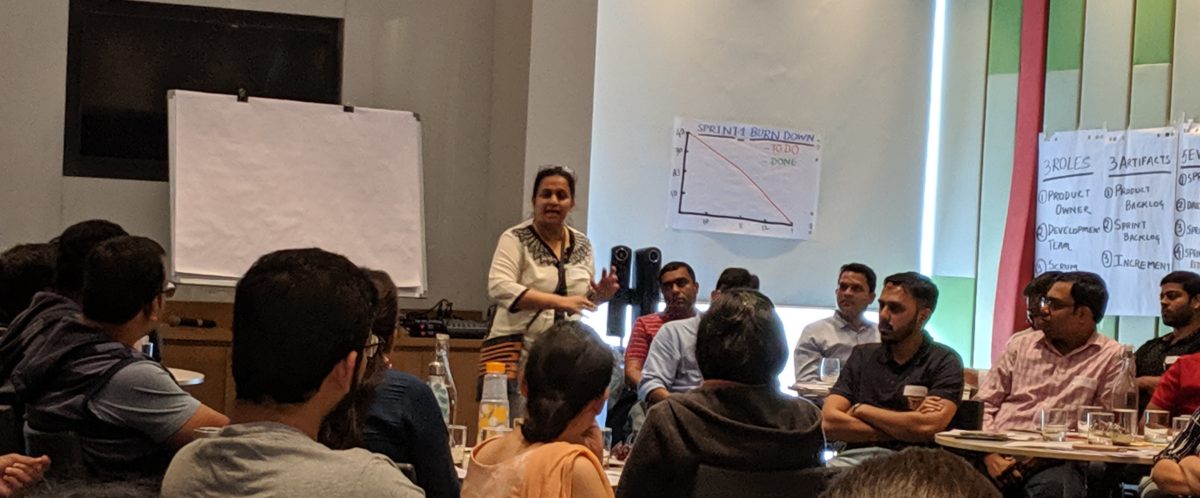A lot of organizations these days have a grand plan to for their agile transformations. They hire “change consultants” , do a “OCM analysis” and come up with a detailed, prescriptive plan that they intend to track meticulously to completion. This in itself sounds so very “waterfallish”. To me it sounds like an oxymoron to have a plan driven transformation to make your organization agile…
In my experience as scrum master as well as an agile coach, a plan dictated approach usually does not work for to transform an organization to agile ways of working.This in no way means that agile transformation does not need planning, indeed it does but the plan needs to be flexible and driven by value delivered. In short, its best to drive an agile transformation in an agile manner.
Key aspects to drive the agile transformation in this way are
- Have the transformation focus on business value – Many organizations are starting the transformations, just to get on agile bandwagon. They have no idea why they want to be agile or what they will gain from being agile. These are the transformations which will fail most likely because there is no clear goal. It is important to have a clear idea about what business objectives will be achieved by being agile.
- Plan Short “Sprints” – Rome was not built in a day and often the transformation plans are detailed, prescriptive and long term. They do not have a tangible value that gets delivered sooner rather than later . This in itself contradicts the agile principle of ” Early and Continuous Delivery ” I have found it very helpful to divide the ultimate transformation goal in smaller , more immediately achievable sprint goals that can be demonstrated to stakeholders. This also helps to build consensus and create a positive vibe about the whole initiative
- Build a Well Planned Product Backlog – While its easily said to have short sprints with sprint goals that are achievable and can be demonstrated, its another story to actually identify those goals. For that it helps to build a prioritized and refined backlog to achieve the business value that is desired. This refinement is ongoing and usually tests the facilitation skills of the scrum master.
- Form an Agile Team – Like any other project that we do, transforming an organizational way of work to agile is a complex and challenging work. It needs all the 3 roles of a scrum team. A scrum master who is experienced. A product owner who can articulate the value and represent it in the backlog. Last but not least, we need a development team that actually implements the backlog items.
Each of the aspect mentioned above deserves a post of its own – there is a lot be discussed. I intend to do just that and write in detail about my perspective of agile transformation in the time to come. Stay tuned!
